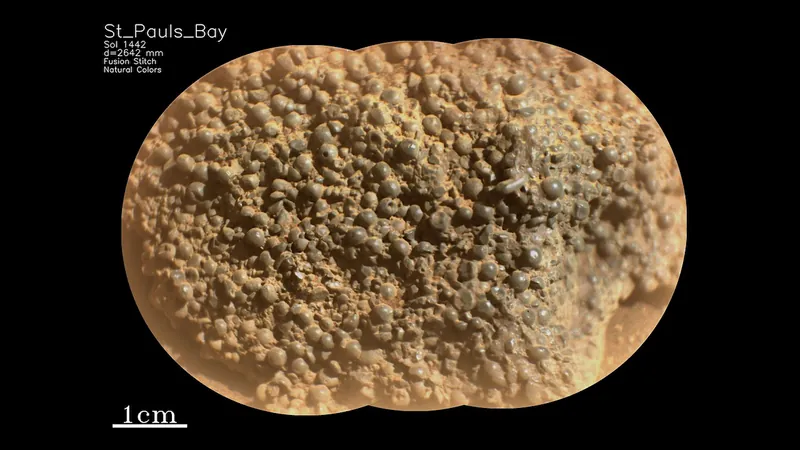
Unveiling Mars' Geological Mysteries: Perseverance Discoveries at St. Pauls Bay
2025-03-25
Author: Nur
Exciting Discoveries on Mars
Recently, NASA's Perseverance rover has made an exciting discovery on the Martian surface that has left scientists buzzing with questions. Nestled in the lower slopes of Witch Hazel Hill at Broom Point, the rover encountered a peculiar rock formation composed of hundreds of millimeter-sized spheres. The peculiarities of these spheres have prompted the Perseverance Science Team to dive deep into deciphering their origin.
The Mission at Jezero Crater
It has been two weeks since Perseverance landed in this intriguing location within the Jezero Crater, an area that has caught the attention of researchers due to its visible light- and dark-toned geological bands from orbit. The mission's latest efforts saw the rover successfully abrade and sample a light-toned bed, leading to the discovery of the oddly textured rock, aptly named “St. Pauls Bay” by the team.
Characteristics of the Spheres
Upon closer examination, these spheres – primarily dark gray in color – exhibit a variety of shapes. While many are rounded, some are elongated or angular, hinting that they may represent broken fragments. Curiously, some of the spherules even exhibit tiny pinholes, adding to the enigma of their creation. How did these extraordinary shapes come to be?
A Historical Perspective on Geologic Features
This isn't the first time Mars has shown off such remarkable geological features. Back in 2004, the Opportunity rover found what were dubbed "Martian Blueberries" in Meridiani Planum, and the Curiosity rover later spotted similar spherules in Yellowknife Bay at Gale Crater. Just months ago, Perseverance itself noticed what appeared to be popcorn-like textures in sedimentary rocks within the Jezero crater inlet channel, known as Neretva Vallis.
Formation Theories
These spherical formations are often interpreted as concretions, suggesting they may have formed through groundwater interactions within rock pores. However, not all spherules follow this formation process. Some may result from rapid cooling of volcanic rock droplets or even from the condensation of rock vaporized by meteorite impacts, as seen on Earth.
Imaging Mars' Geological Wonders
Using its Left Mastcam-Z camera, Perseverance captured an impressive image of the “St. Pauls Bay” target. This particular image, taken on March 13, 2025, during Martian day 1,444 of the Mars 2020 mission, highlights the enchanting beauty and complexity of Mars' geology.
Implications for Understanding Mars' History
The implications of each proposed formation mechanism could greatly influence our understanding of Mars' geological history. The team is diligently trying to connect the spherule-rich textures found at St. Pauls Bay to the broader stratigraphy of Witch Hazel Hill. Preliminary findings suggest that these spheres may be affiliated with one of the dark-toned layers identified from orbit. Understanding these connections will be vital for comprehending the geological narrative of both Jezero Crater and the surrounding regions.
Looking Ahead
Stay tuned, as the Perseverance rover continues to challenge our knowledge of Mars, revealing new secrets about the planet's past and raising exciting questions about its geologic evolution. What other unexpected findings await us on this incredible journey across the Red Planet?



 Brasil (PT)
Brasil (PT)
 Canada (EN)
Canada (EN)
 Chile (ES)
Chile (ES)
 Česko (CS)
Česko (CS)
 대한민국 (KO)
대한민국 (KO)
 España (ES)
España (ES)
 France (FR)
France (FR)
 Hong Kong (EN)
Hong Kong (EN)
 Italia (IT)
Italia (IT)
 日本 (JA)
日本 (JA)
 Magyarország (HU)
Magyarország (HU)
 Norge (NO)
Norge (NO)
 Polska (PL)
Polska (PL)
 Schweiz (DE)
Schweiz (DE)
 Singapore (EN)
Singapore (EN)
 Sverige (SV)
Sverige (SV)
 Suomi (FI)
Suomi (FI)
 Türkiye (TR)
Türkiye (TR)
 الإمارات العربية المتحدة (AR)
الإمارات العربية المتحدة (AR)